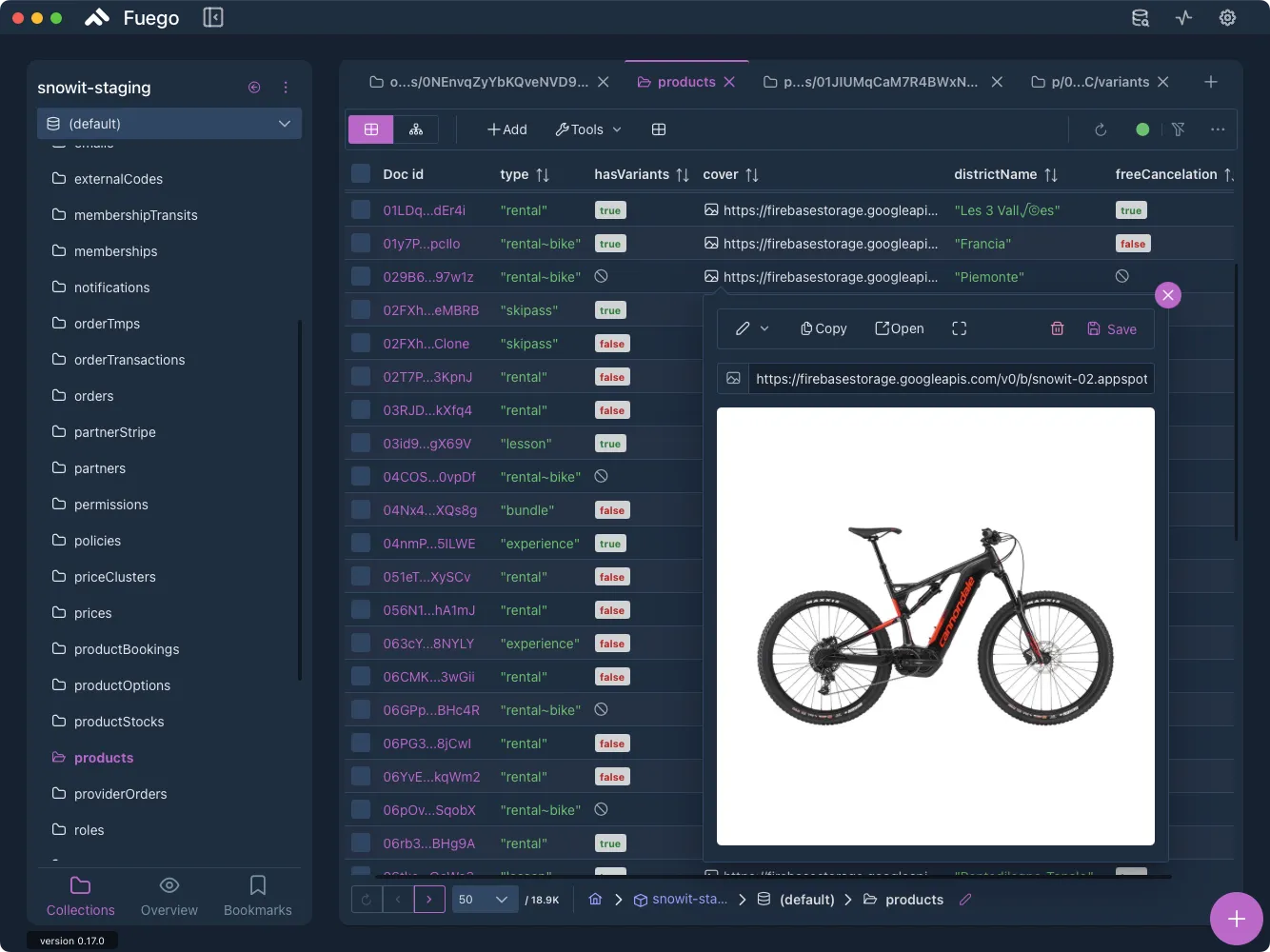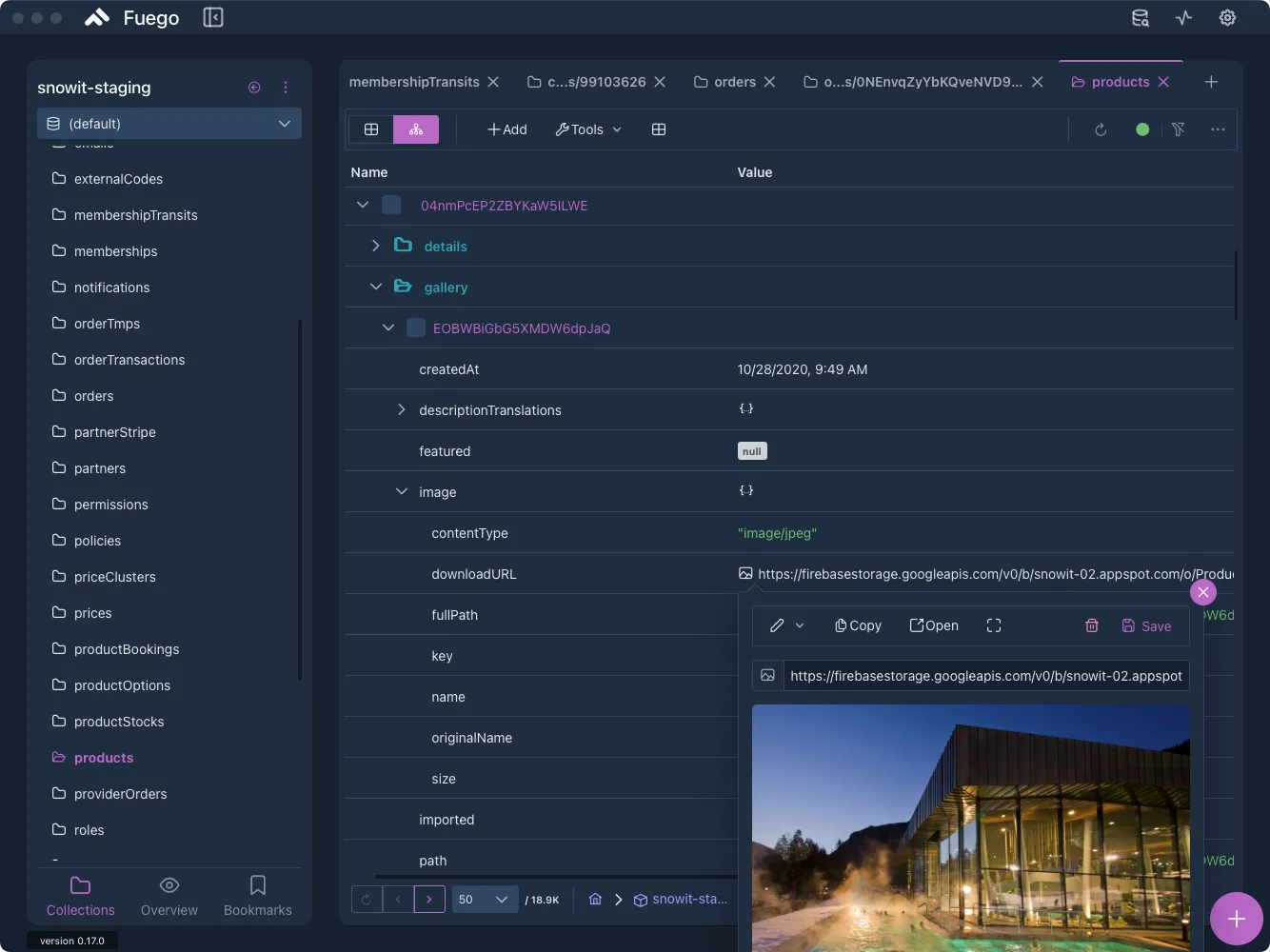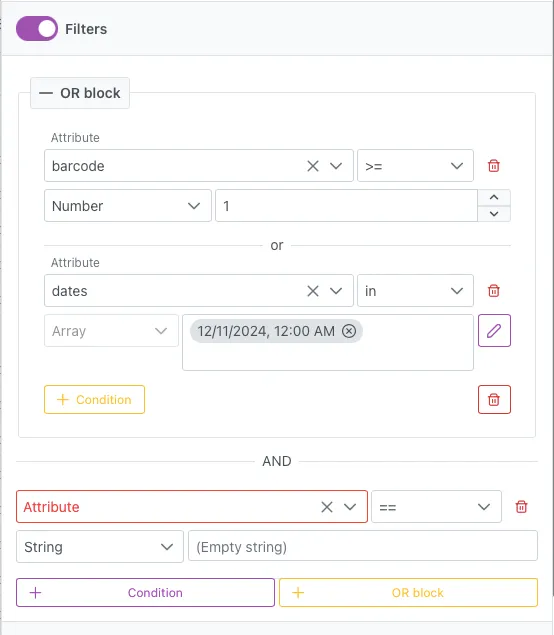Default View: Table and Tree View
The default interface in Fuego offers both a Table View and a Tree View to support efficient data management.
The Table View presents data in a structured, spreadsheet-like format, making it ideal for detailed editing and quick data assessments. In contrast, the Tree View displays the hierarchical structure of your Firestore database, enabling intuitive navigation and a comprehensive understanding of data relationships.
Together, these views allow users to seamlessly switch between managing detailed records and obtaining an organized overview, catering to different data management needs.
Tabs
Fuego’s tabbed interface is designed to provide a flexible and organized way to manage different data elements within a single session. Tabs can be used to display various types of content, including:
- Collections: View and manage documents within specific collections.
- Query Results: Display results from custom queries, including real-time results, allowing users to work with filtered or sorted datasets.
- Single Document: Open individual documents for focused editing and manipulation.
- Collection Groups: Perform queries across multiple collections that share the same name, even if they are distributed across different parts of the database hierarchy.
This approach enhances the user experience, making it easier to switch between browsing collections, editing documents, and analyzing query results—all within one interface.
Table View
The Table View in Fuego offers a structured, familiar display of Firestore data, similar to a spreadsheet. This view is designed for quick and efficient browsing and management of data.
Realtime data is used, but it can be disabled if performance issues arise

-
Table Columns
Users can customize the table columns to determine which fields from Firestore documents are displayed, including special columns like creation and modification timestamps, as well as the actual size of each document. This flexibility allows users to focus on the most relevant data for their specific tasks or analyses.
-
Count and Pagination
The Count and Pagination feature provides an overview of the total number of documents in a query and divides the data into manageable pages. Pagination in Firestore is based on
startAfterandendBefore, which has some limitations when handling very large datasets or specific query requirements. Despite these limitations, it enhances performance and usability for most typical use cases. -
Document Details
The Document Details section opens in a sidebar, allowing users to view and edit the full contents of a selected document. Users can also perform operations on the document, view subcollections, and access the PITR (Point in Time Recovery) view. This detailed view is essential for thorough data management and troubleshooting.
Tree View

-
Visualize Firestore Data Structure
The Tree View provides a clear, visual representation of the Firestore database’s structure. It reflects the relationships between collections and documents, making it easier to understand how data is connected. This is particularly helpful for navigating complex databases with multiple levels of subcollections.
-
Flexible Navigation
Users can expand and collapse nodes to explore specific sections of the database or to get an overall view. Fuego makes it easy to navigate through subcollections, regardless of how deeply they are nested, allowing for seamless exploration across the entire database.
-
Enhanced Data Management
The Tree View helps developers and administrators gain a clear understanding of the database architecture, retrieve information efficiently, and ensure important connections within the data are not overlooked.
Query builder

